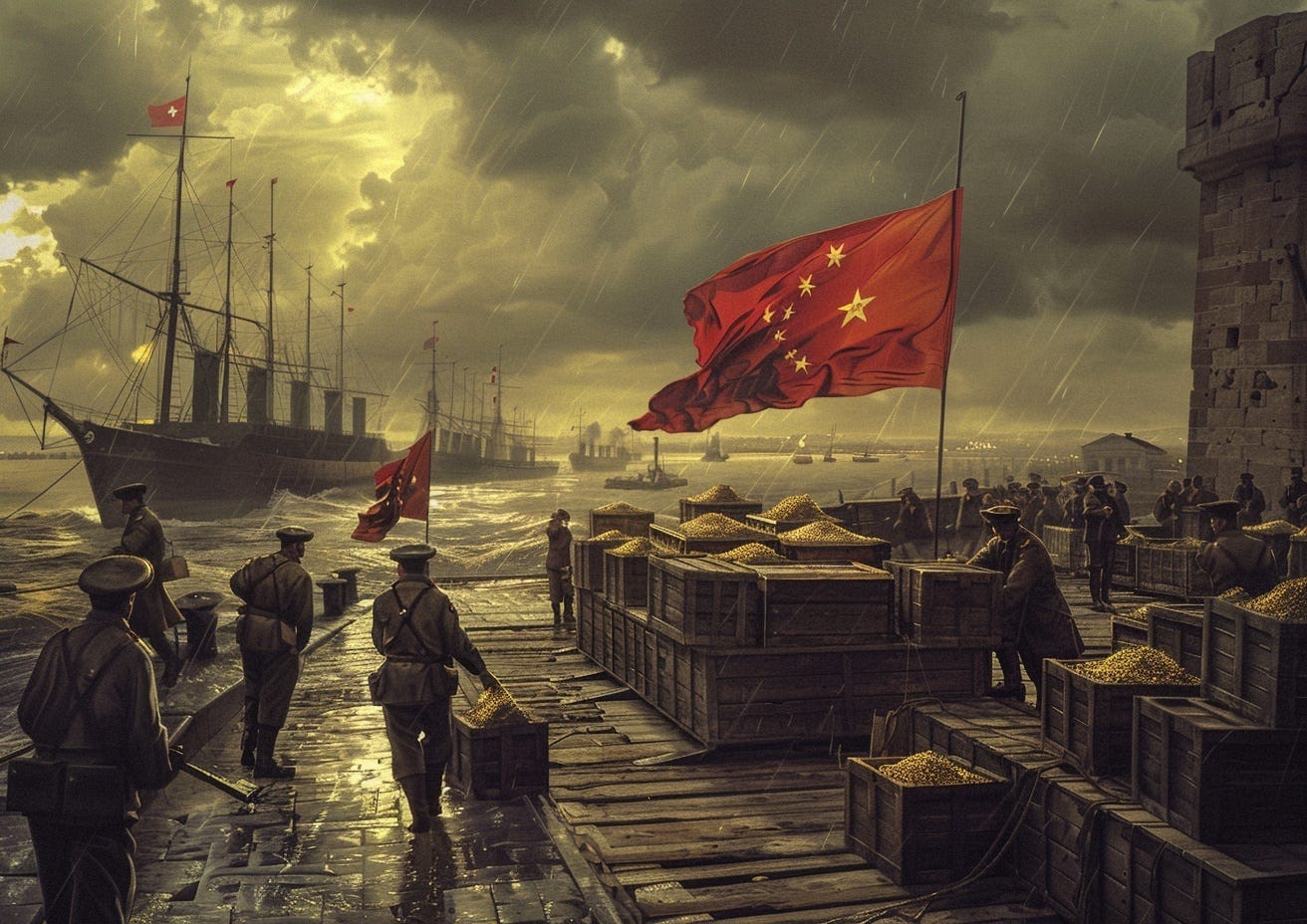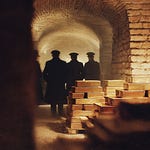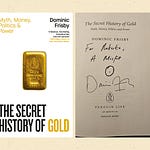“They will never see their gold again, just as they do not see their own ears.”
Josef Stalin
Gold’s strength is that its value exists in and of itself. It’s nobody else’s liability. Unlike money in the bank or a bond, it carries no promise from a third party, and its value is not dependent on the creditworthiness of any issuer or guarantor. Hand it to someone else and its value is transferred. It is a “bearer” asset, effectively owned by whoever has possession of it. For this reason gold has been the target of many a heist. Quickly resmelt it, and its provenance is very hard to prove.
So there is one obvious problem with gold: that is keeping it safe. It’s all very well having a pot of gold, but if somebody comes along and takes it from you, as Alexander did from the Persians, or the Conquistadors from the Incas, then you’re left with nothing at all.
When the Spanish Civil War broke out in 1936, the Soviet Union, under Joseph Stalin, supported the Spanish Republican government. The Nazis supported their opponents, the revolutionary fascist forces led by General Franco. At the time Spanish gold reserves, some 635 tonnes,1 were the fourth largest in the world.
Much of that treasure had been accumulated during WWI, when Spain had stayed neutral. Selling stuff to the British seems to have been the really big earner: 70% of Spanish gold holdings were British sovereigns.2
With Franco just 20 miles from the capital, the Republicans were on the verge of defeat. Never mind the fascists, there were also rumours that Catalan separatists had hatched plans to take the gold from Madrid to Barcelona. All that gold was at risk.
Finance minister, Juan Negrín, and Prime Minister, Francisco Largo Caballero, leant on President Azaña to sign a secret decree to move the gold - some 10,000 cases - to a place “which in his [Negrín’s] opinion offers the best security”.3 Azaña signed and the gold was moved, starting the next day, to Cartajena on the south coast, as far from Franco’s armies as possible. The Spanish soldiers who transported the cases thought they were lifting munitions. A fifth of it was then shipped to Marseille where it was traded for French francs, which the Republicans used to fund their side of the war. The rest, 510 tonnes, would be sent to Joseph Stalin in Moscow for safekeeping.
Even if Bolshevik sympathisers, what were Negrín and Caballero thinking? The Russians had already demonstrated that they had no qualms about seizing other people’s gold. In 1916, the Romanian government sent its treasury of 91 tonnes of gold to Tsarist Russia for safekeeping, worried that it was vulnerable to the Central powers when Romania had just joined WWI on the side of the Entente. Shortly afterwards, during the Great October Revolution, communists, led by Lenin, seized power, sequestered the gold and refused to give it back. Though small amounts were returned in 1935, 1956, and 2008, “as a gesture of goodwill”, the large majority was retained. As you can imagine, it has been something of a sore spot in diplomatic relations between the two nations ever since.
It seems Negrín and Caballero did not know the story. In any case, Caballero actually wrote to Stalin asking if he would “agree to the deposit of approximately 500 tonnes of gold.”4 Two days later, he got a reply from the Soviet leader, not previously known for his prompt responses. No surprise: Stalin would be “glad” to take the gold.
Buying gold or silver to protect yourself in these ‘interesting’ times? The bullion dealer I use and recommend is the Pure Gold Company. Pricing is competitive, quality of service is high. They deliver to the UK, the US, Canada and Europe or you can store your gold with them. More here.
Alexander Orlov was the Russian agent in charge of transporting the booty. Negrín gave him fake documents to show he was an US official from the Bank of America, in case he should be stopped. Negrín, who, remember, was finance minister, had thought Bank of America was the US central bank. That would be the Federal Reserve. Russian agent Orlov didn’t realise either. It’s extraordinary.
Four Russian ships came to Cartagena to collect the bounty, and the gold was loaded on. There was a discrepancy of 100 cases between Orlov and Spanish treasurer Mendez Aspe’s number: Aspe said 7,800 cases, Orlov 7,900. Orlov said nothing. He reported the discrepancy to his superiors, who told him, “Do not worry about figures. Everything will be counted anew in Moscow. Do not mention your figure to anybody.”5 Aspe didn’t even get a receipt off Orlov (who had been instructed not to give him one). “Don’t worry, my friend,” said Orlov, “it will be issued by the State Bank of the Soviet Union, when everything is checked and weighed.” We will never know whether Orlov miscounted or whether those 100 boxes went missing.
It took them three nights to load the four ships. The Russians then left Cartagena for Odessa in the Black Sea, escorted by the Spanish as far as Italy. From Odessa it was loaded onto a freight train bound for Moscow. "If all the boxes of gold that we piled up on the wharfs of Odessa were to be placed here side by side,” said one of the officials. “They would completely cover up the Red Square".6
When the gold arrived in Moscow, Stalin celebrated with a banquet at the Kremlin. “They will never see their gold again”, he laughed. “Just as they do not see their own ears.”
The Spanish eventually got their receipt: for 5,619 standard cases and 126 damaged. Some distance below both Aspe and Orlov’s figure. But three months later the Russians completed the audit, calculating that the shipments totalled 510 tonnes of gold coins and ingots, 90% pure, thus around 460 tonnes of pure gold. There were gold coins from across Europe and Latin America, especially those British sovereigns and Portuguese escudos, but also Spanish pesetas, French, Swiss and Belgian francs, German marks,, Russian rubles, Austrian schillings, Dutch guilders, and Mexican, Argentine and Chilean pesos. The numismatic value of the coins was higher than their gold content.
The following year Spain met with a currency crisis. With exceptional chutzpah, even by the standards of politicians, Republicans blamed the inflation on the free market. Nothing to do with the absence of all that gold!
Later, the Franco regime was happy to let the story of the "Moscow gold" stolen by Russia spread, as part of its anti-communist propaganda. And yet it appears sell orders from Negrín were actually carried out in 1937 and 1938, for which Spain received pounds, dollars and francs. Spain also received planes, tanks, machine guns, artillery, rifles, cartridges, food and fuel from Russia. The Soviets demanded some compensation for what they had sent during the war, but it’s believed that aside from various expenses, the Soviets did not abuse their position and defraud the Spanish. Ultimately then, most of the gold went, one way or another, on the cost of the civil war. Such is the way with war. It is expensive.
And just a couple or three years later, as Nazi forces advanced through Europe, the farce of transporting gold would be repeated many times over, and across the continent.
Stories like this fill the pages of The Secret History of Gold (although this one didn’t actually make the cut).
The Secret History of Gold is available to pre-order at Amazon, Waterstones and all good bookshops. I hear the audiobook, read by me, is excellent. The book comes out on August 28.
Pons, María Ángeles; Martín Aceña, Pablo; Martínez Ruiz, Elena (2006). La Hacienda pública y la financiación de la guerra (PDF). Marcial Pons Historia. ISBN 84-96467-33-3. p14
Martín Aceña, P. (2001). El Oro de Moscú y el Oro de Berlín. Taurus, p26
Taber, p17
Taber, p18
Taber, p23
Walter Krivitsky, In Stalin's Secret Service, pp. 112–3.













